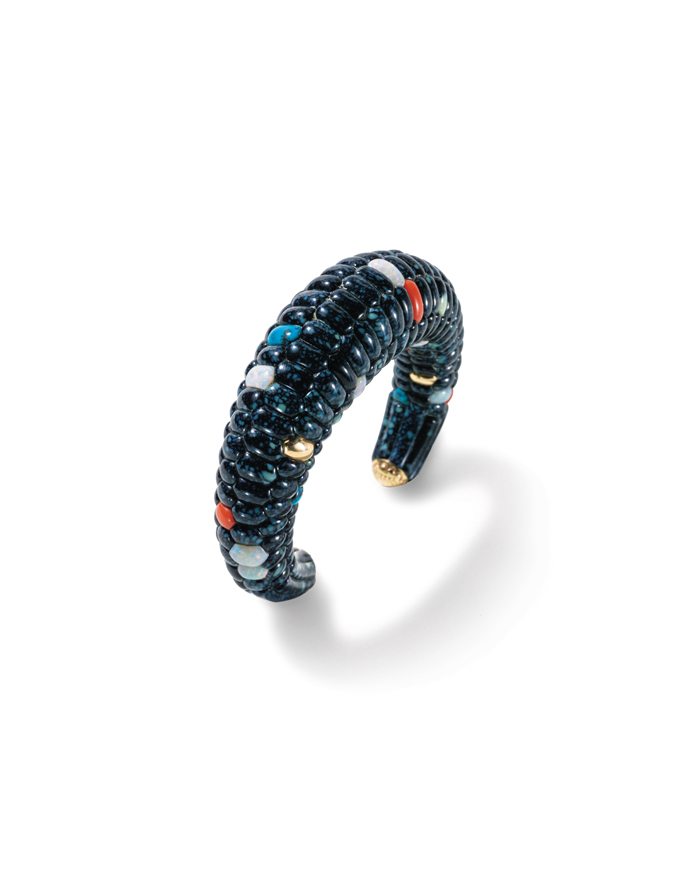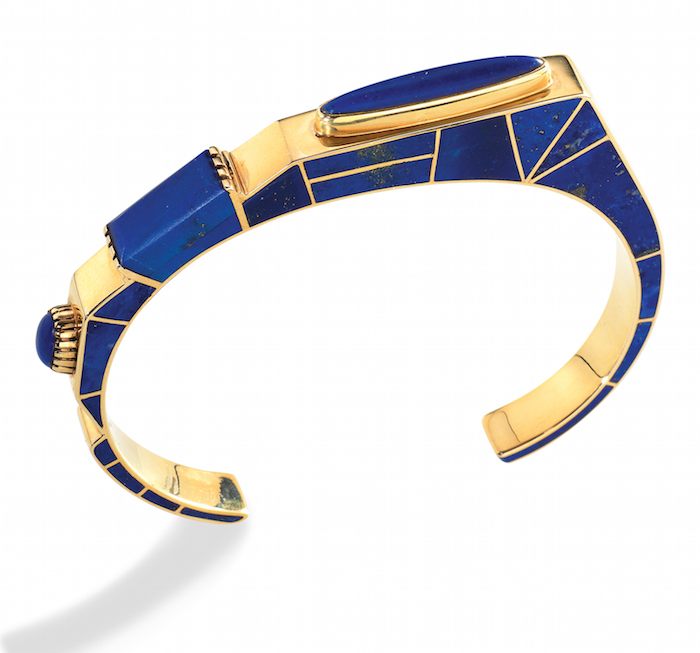By Nancy Pier Sindt

Ring by Raymond Yazzie is made from two types of native turquoise, opal and sugilite and set in 14-karat gold.
There’s a little jewel at the very southern tip of Manhattan that’s been entertaining and educating the public about Native American history for more than 20 years. Housed in the magnificent Alexander Hamilton Custom House at Bowling Green and now part of the Smithsonian, the Museum of the American Indian is a treasure trove of photography, artifacts and costumes from numerous Native American tribes — and now until January 2016, magnificent jewelry from the prolific and talented Yazzie family of Gallup, NM.
The current exhibit, entitled Glittering World: Navajo Jewelry of the Yazzie Family, is a multipart show that contains more than 300 pieces of contemporary jewelry; it is a must-see for anyone with an appreciation for gemstones, design and the interplay between culture and art. Elder brother Lee Yazzie begins with sketches that reflect his cultural background and natural surroundings. Some of his signature designs include a series of bracelets and necklaces inspired by the Indian staple, corn. In the jewelry, each gemstone kernel is cut and set invisibly, perfectly capturing the natural shape of an ear of corn.

Blue corn bracelet by Lee Yazzie is constructed with hidden bracework that anchors the turquoise, opal, lapis and coral gemstone kernels.
Relying on his love and expertise of native gemstones, younger sibling Raymond Yazzie does not sketch, but instead works directly with gemstones, choosing the best pieces, studying their form and cutting each one individually to build the finished piece. His work can be recognized by the domed, inlaid forms of multcolored stones including turquoise, coral, lapis, opal, sugilite and jet. Among the most magnificent pieces are bracelets, rings and concho belts featuring what.
Last but not least is sister Mary Marie, who has perfected the art of creating jewelry of sterling silver and gemstone beads. Her designs are modern yet classic, mixing etched, polished and matte silver beads with natural gemstones.
Exhibition curator Lois Sherr Dubin, explains that the jewelry is a perfect blending of art and commerce, one that allows the Yazzie family to express its beliefs and expressions into artistic and salable form. “Materials, designs and spiritual connections, enriched over the years, are transformed into contemporary settings,” she observes. Her richly illustrated 275-page book accompanies the exhibit. The book, as well as original fine jewelry from a number of Native American designers can be purchased at the museum’s in-house shop. Showing concurrent with this exhibition is Photography by Horace Poolaw and the museum’s permanent exhibit, Infinity of Nations art and historical collections. For more information, www.AmericanIndian.si.edu.


